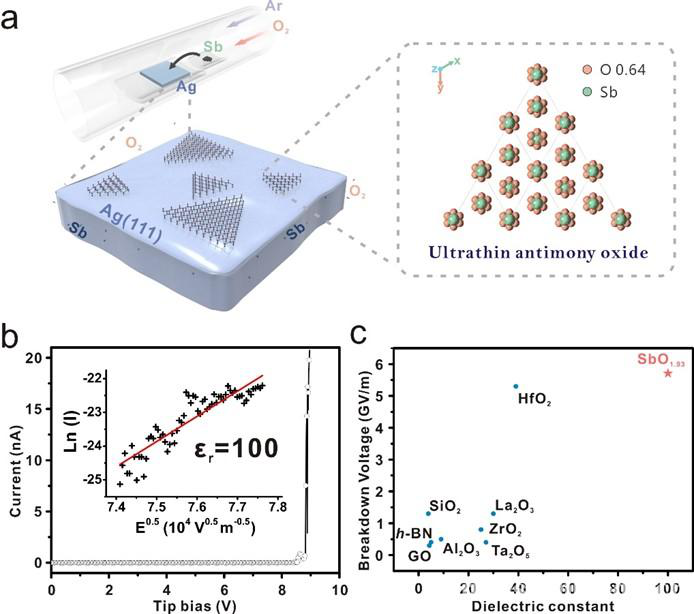On May 19, Nature Communications published an article by Professor Fu Lei, introducing a silver-based buffer strategy raised by his team. This work develops a way to prepare a new type of ultrathin high dielectric constant antimony oxide single crystal, which provides a general method for the growth of ultrathin single crystal oxide.
The paper, entitled Ultrathin high-κ antimony oxide single crystals, has Wuhan University named as the first author affiliation. PhD students Yang Kena and Zhang Tao (both of the College of Chemistry and Molecular Sciences, WHU), Wei Bin (International Iberian Nanotechnology Laboratory) and Associate Professor Bai Yijia (College of Chemical Engineering, Inner Mongolia University of Technology) are co-first authors. Professor Fu Lei and Professor Wang Zhongchang (International Iberian Nanotechnology Laboratory) are co-corresponding authors. The research is funded by the National Natural Science Foundation of China.
Ultrathin oxides have attracted much attention owing to their excellent properties in the fields of electricity, magnetism, optics and catalysis. Ultrathin oxides with high dielectric constant have massive applications in electronic devices. At present, the application of ultrathin oxide is restricted by the preparation of high-quality ultrathin single crystals. Current research mainly focuses on the synthesis of amorphous or polycrystalline oxide films, which often have defects and interface states, especially when the oxide is low in density which runs the risk of electric leakage. It is therefore important to develop a universal strategy for the preparation of ultrathin oxide single crystals.

Preparation and insulation performance of ultrathin single crystal antimony oxide
Fu’s team has been working on the synthesis of two-dimensional atomic crystals and has developed a method to synthesize two-dimensional atomic crystals based on liquid metal system. On the basis of previous work, the research introduces liquid solidified silver into the preparation process of the oxide to buffer excessive antimony precursor against basal body using silver substrate. This process plays an important role in the complete oxidation of surface antimony and the subsequent growth of ultrathin antimony oxide single crystals. With further investigation, researchers applied synchrotron radiation grazing-incidence X-ray diffraction method and found that the single crystal of antimony oxide has a β-antimony structure, with an antimony-to-oxygen ratio of 1:1.93(SbO1.93). At the same time, the team explored the insulation ability of the novel structure and found that the structure has a dielectric constant of up to 100 and a breakdown voltage of 5.7 GV m−1. Compared with other insulating materials commonly used in two-dimensional devices (such as h-BN and HfO2), it has good insulating properties, which injects new impetus into the development of the microminiaturization of electronic and optoelectronic devices in the future.
The team has also expanded on the universality of the silver-based buffer control strategy and found that the strategy can be also applied to the preparation of other ultrathin oxide single crystals (such as tin oxide, germanium oxide and bismuth oxide). It provides a new way to develop strategies for the preparation of ultrathin oxide single crystals.
The work is supported by a number of research institutions: Wang Zhongchang’s team (International Iberian Nanotechnology Laboratory) and Wang Jianbo’s team (School of Physics and Technology, WHU) characterized the samples using a spherical aberration correction high resolution scanning transmission electron microscope. Zhou Hua’s team (Argonne National Laboratory) and the team from the Shanghai Institute of Applied Physics (Chinese Academy of Sciences) used radiation-based grazing incidence X-Ray diffraction spectroscopy to characterize the sample structure. Associate Professor Bai Yijia (Inner Mongolia University of Technology) provided support for the structural analysis. Associate research fellow Gao Enlai (School of Civil Engineering, WHU) provided support for the theoretical calculation of the structural band gap.
Linkage: https://www.nature.com/articles/s41467-020-16364-9
Written by: Hua Yuan
Rewritten by: Liu Tongxv
Edited by: Cao Siyi, Shen Yuxi, Sylvia and Hu Sijia